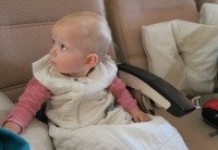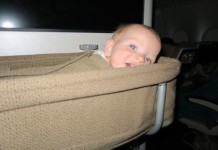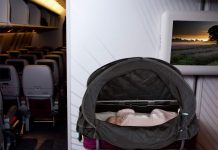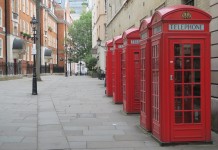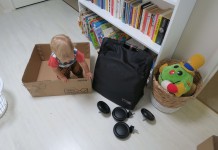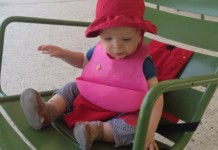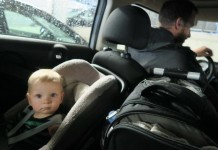Jet lag. The mere word can send shivers down a traveller’s spine. We don’t want to alarm you, but frankly, baby jet lag equals a world of exhaustion, especially when adult jet lag is combined with it.
Typically, jet lag is worse for all ages when you’re travelling east. So if you’re an Australian heading to Europe, you probably have a better run with jet lag on the way there than the way home.
When you’re an adult with jet lag, it really makes sense to try to push through a bit upon arrival. If you can stay awake till around 6 PM, it makes the chance of waking up at midnight and being unable to go back to sleep a little less likely.
But I challenge any parent upon looking at their blubbering, exhausted baby, not to take the most sensible path and get them straight into bed, regardless of the hour. What this means is that you will inevitably have some periods where they are awake – we mean really wide awake – at the complete wrong time. (For Sue, this was midnight till 3am on arrival in Europe from Australia.) The good news is, babies and children under one tend to only be awake for three to four hours at a stretch (often far less, if they are six months old, and if you’ve got a newborn, they will kip every hour or so). So if you find yourself singing ba ba black sheep at 1 AM, pulling our your trusty toy bag, or exploring the hotel lobby in the wee hours, don’t despair; you’ll all be back in bed soon enough.
Why baby jet lag is sometimes worse for the adults.
The real problem comes if, when the baby wakes to feed, it jolts your own mind into the realisation that it’s actually only 2pm in your body, and you find it impossible to get back to sleep. Often, ironically, the adult ends up being the weak link in the jetlag period, because you really are working to the baby’s schedule.
How to survive baby jet lag.
There are all sorts of people happy to advise you on ways to get through baby jet lag faster. The most common advice is sunlight. When it’s daytime, get the baby out into the sun, to help reset the body clock.
We’re not saying this is not a good idea, but we are saying it is unlikely to be the magic bullet solve that you are hoping for. In our experience the best cure for jetlag is time. We know – horrific! Some say to allow one day for every hour you change time zone; this feels about right in our experience.
One good tip to remember when combating jet lag on the way over is to have food available for both adults and babies at an anti-social hour. That way, when your baby things is lunchtime at midnight, you have an easy solve on hand.
When you’re back home, rather than fighting it, use the time your baby is crawling around wide-awake at 2am to your advantage; Sue managed to unpack, do multiple loads of washing and spring clean three cupboards in the first week of arriving home from Europe, all because her then one year old thought it was party time.

